So, you’ve bought your adventure bike, you’ve got all your gear, there’s just one last thing to do: master the dark art of packing for a motorcycle trip.
With so many luggage options out there, it can be hard to know what’s right for your bike and situation.
And once you’ve chosen you’re luggage, you then need to figure out what to bring and how to pack it.
So, whether you’re heading off for a week in the Alps or quitting your job and riding around the world, here’s a guide to packing your motorcycle for your next adventure.
To do this, we’ve teamed up with the good folk at Givi to show you the best luggage options, and how to pack them, for your bike.
Hard vs soft luggage
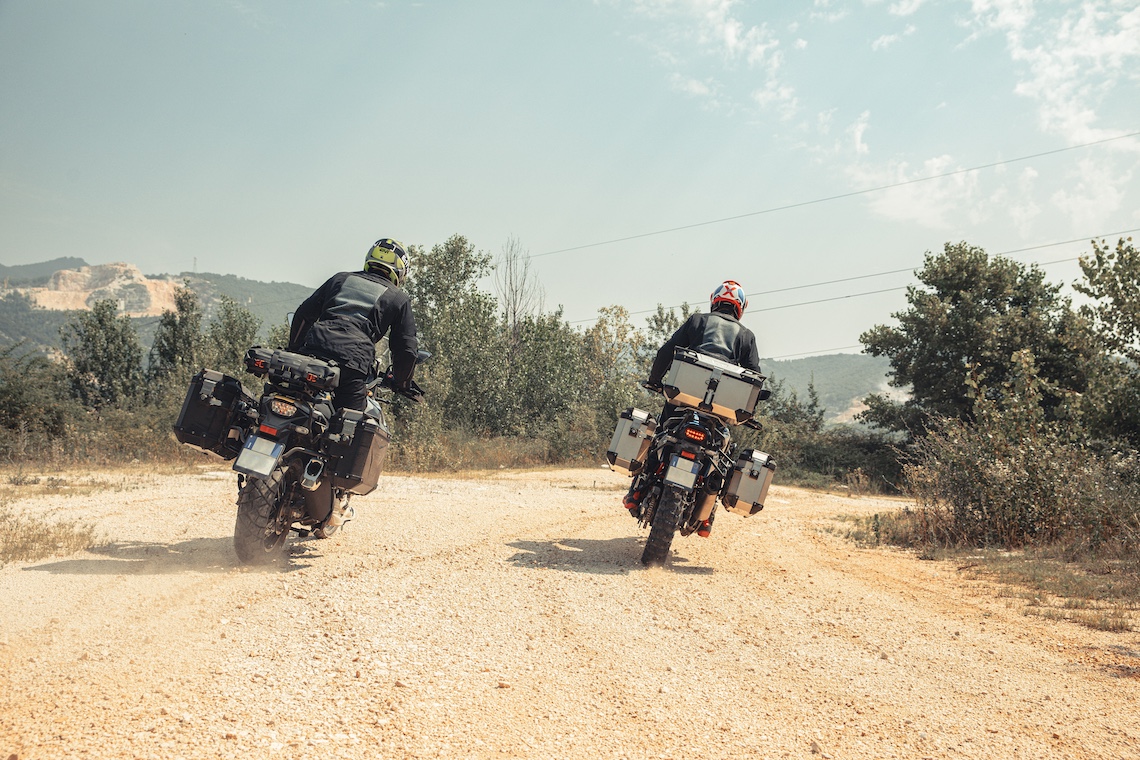
The majority of your gear will live at the back of your motorcycle, either on the sides as panniers, on the rear luggage rack, or both.
The reason for this is that it gives you the maximum amount of space to secure your luggage, while also maintaining as much of the bike’s natural handling.
But which luggage do you choose?
There’s a debate amongst adventure motorcyclists whether hard or soft luggage is the best, but the truth is that both have their advantages and drawbacks.
If you’re spending most of your time on tarmac, then hard luggage is a more practical choice. It’s the easiest way to pack your gear, gives you plenty of storage space, and offers protection against theft.
Meanwhile, soft luggage tends to be the better choice if you’re heading off-road, as it weights less, has a slimmer profile, and there’s less chance of damaging your bike or yourself if you take a spill.
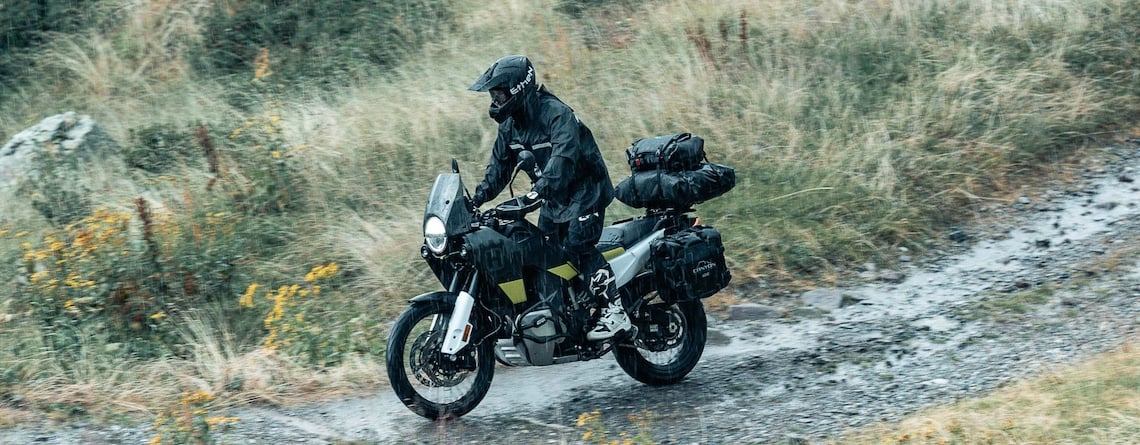
Also, if you’ve got a trail bike or smaller capacity bike, compact soft luggage like the Givi GRT718 panniers are perfect to throw over the tail fender of your bike without needing to install pannier racks.
However, both options are suitable for any kind of riding, and you can also mix and match to get the best of both worlds.
For example, you could combine Givi’s Trekker Outback hard panniers to store the majority of your gear and pack extra kit in a waterproof Givi Canyon roll-top bag that mounts to the rear luggage rack.
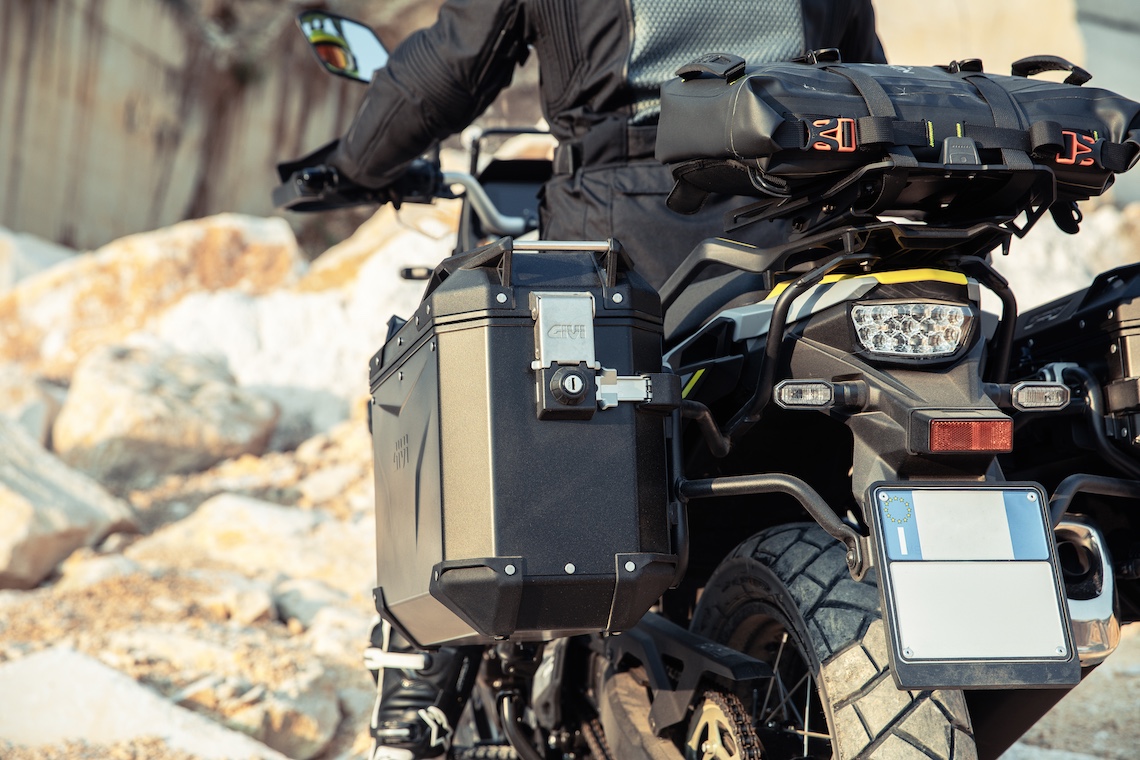
This way, the centre of gravity is kept low, your most important gear is protected in hard luggage, and the Canyon roll-top bag provides modular expandability if you need extra space.
Extra luggage space
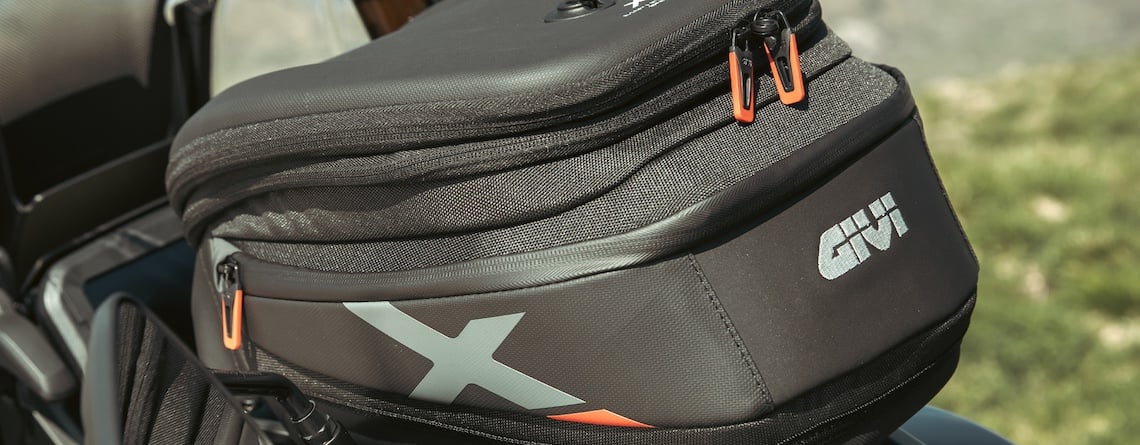
If you’re bringing a lot of gear, you might find yourself needing more luggage space.
Tank bags are incredibly useful, because not only do the expand your storage options, you can also easily access it while you’re in the saddle.
This makes a tank bag the perfect place to store items such as your phone, wallet, camera gear, and snacks while you’re on the road.
If you need even more space, there’s also options such as Givi’s 8L Canyon Borsa cargo bags, which attach to your bike’s crash bars and are great for storing spare clothes or tools.
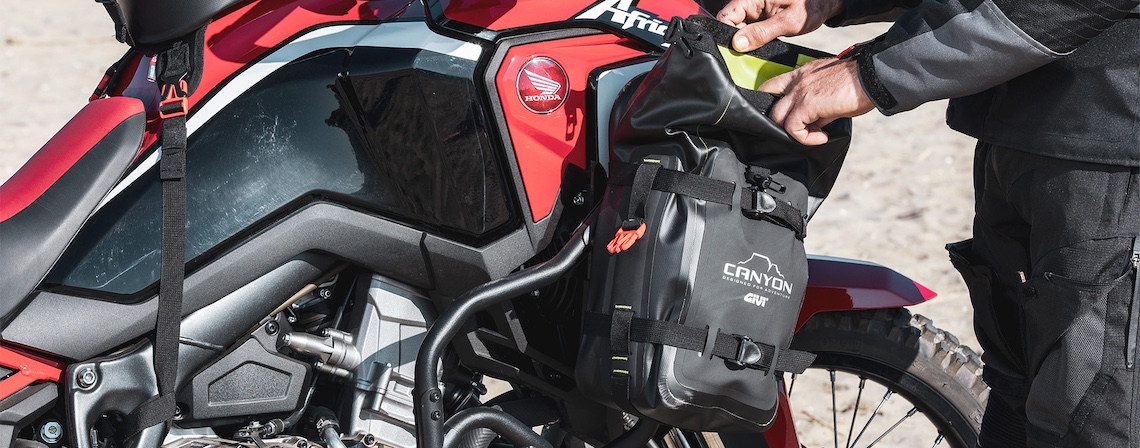
There’s also always the option of strapping things to the outside of your luggage if you have particularly bulky items, but it’s worth thinking about what you really need.
This brings us on to the next point, what do you take?
What to take on a motorcycle trip
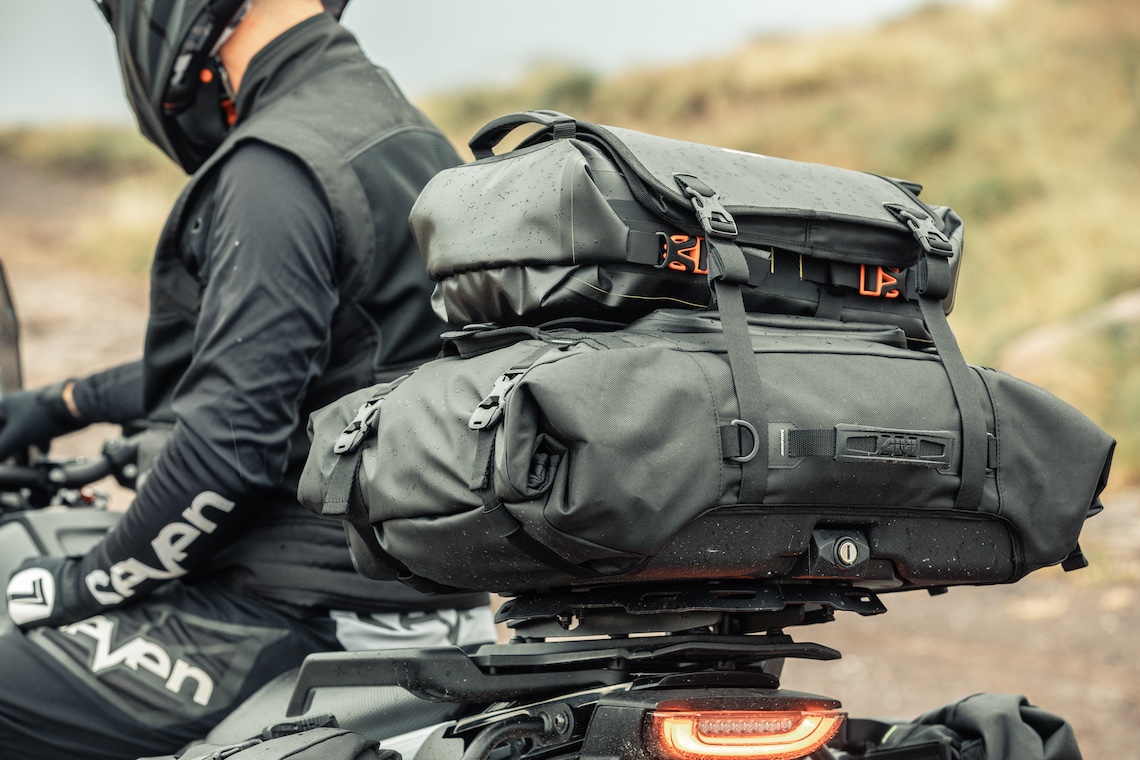
Entire books have been written on this subject, but as a general rule: you don’t need as much as you think you do.
There are some obvious essentials, such as your adventure motorcycling gear, your toothbrush, and your pants.
But there are other items are also absolutely worth having that you might not have thought to bring.
A head torch is great if you’re unpacking your bike at night or camping, and easily fits in your tank bag.
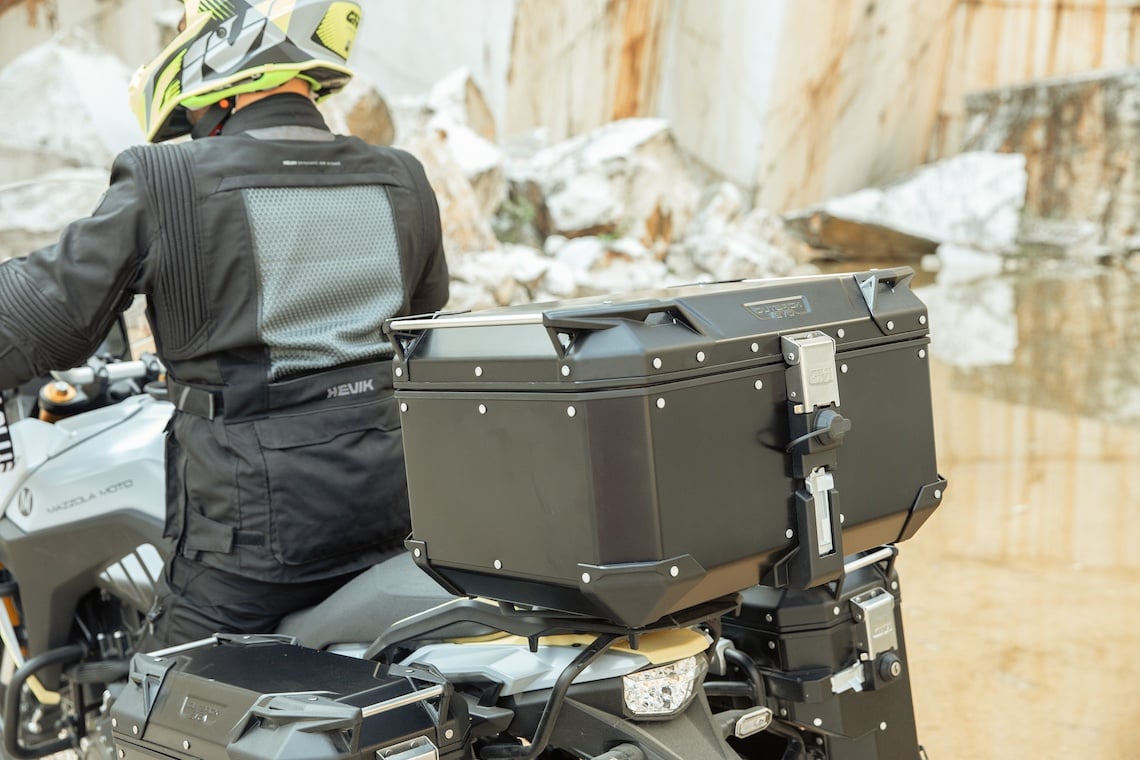
Ratchet straps are also useful if you need to strap extra kit to your bike, and can also come in handy if you breakdown and need to transport your bike.
If you’re leaving civilisation behind, it’s worth having tools, including a tyre repair kit, the right size sockets, grease for the bearings, and cable ties.
And aside from your regular motorcycle gear, a lightweight down jacket is the perfect mid-layer both off and on the bike, and easily packs down small.
The key is to choose the most versatile gear possible so you use it as often as possible, and leave items like a camera behind unless you’re really going to be making the most of it, otherwise, a smartphone will do just fine.
It really depends on where you’re going and how long for, and whether you’re planning on camping, as to what you should take.
How to pack your gear
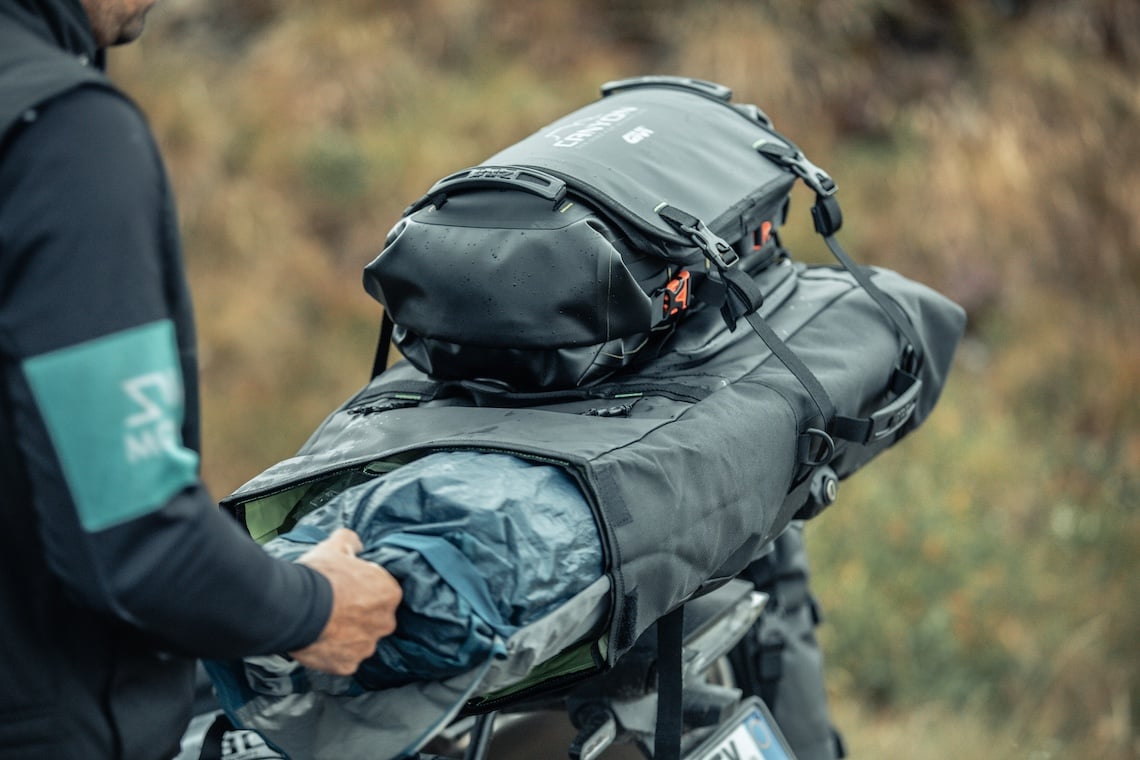
It’s good practice to pack your panniers in the same way that you’d pack a hiking bag: heaviest items like a tent or cooking gear at the bottom, along with things you aren’t likely to need until you’ve done riding for the night.
Meanwhile, keep your waterproofs somewhere easily accessible.
Packing cubes are a great way of organising your gear, so it isn’t all just bouncing around together in your luggage, and saves you having to pull out all your belongings just to get to a spare pair of socks at the bottom of your pannier.
In a similar vein, a tool roll like this one from Givi is a great way to keep all your tools together and stash them somewhere accessible.
Don’t overthink it – get out and ride
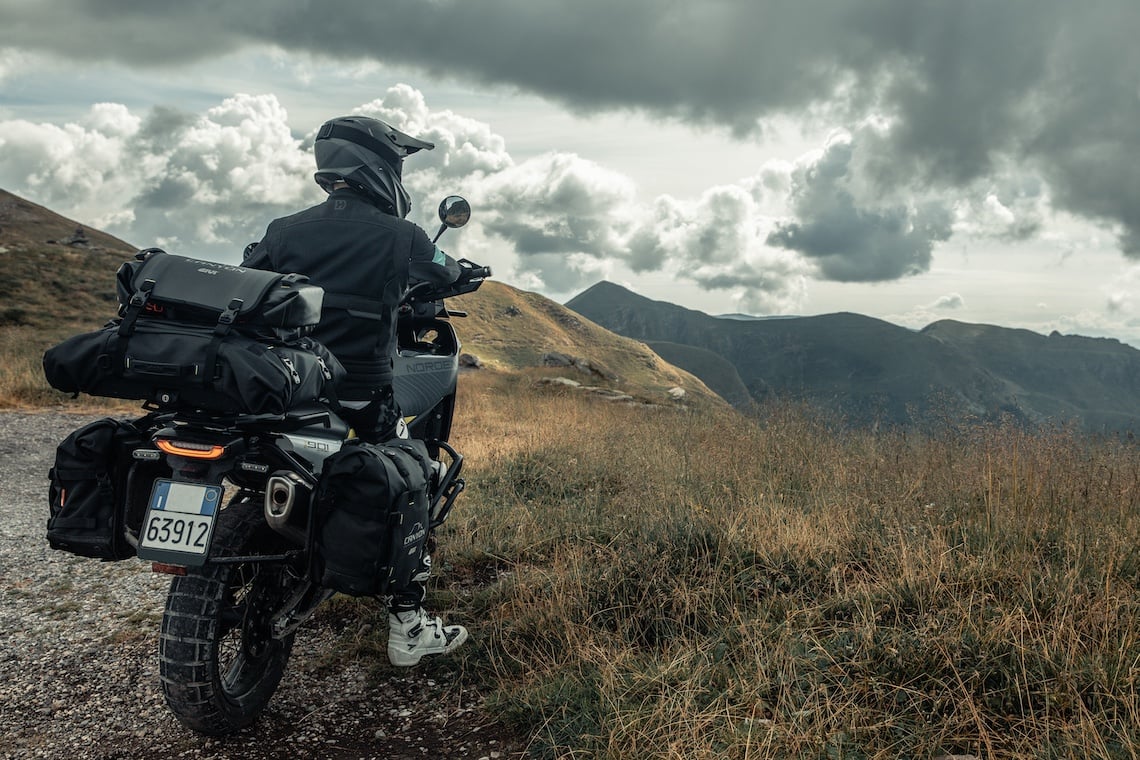
It can be all too easy to get caught up in planning for a trip and thinking you need every last piece of gear before you go.
But the truth is, you’ll be able to get by with what you’ve got, and you can always pick things up on the road as well.
The most important thing when it comes to packing for a motorcycle trip is to make sure you’ve got reliable, robust, and easy-to-use luggage to keep your gear in.
We’ve used Givi hard and soft luggage over the years, and it’s always proved an excellent accompaniment to our adventures.
You can check out Givi’s range of luggage by clicking here.


